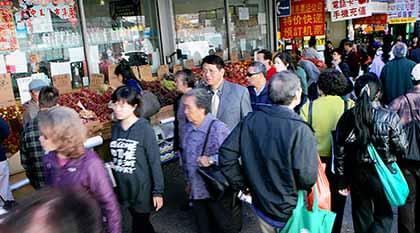By Howard Koplowitz
Every one of the borough’s 18 state Assembly districts had an increase in its Asian population between 2000 and 2009, according to new data released by the U.S. Census last week.
The largest increase was in Jamaica, which saw its Asian population rise roughly 110 percent — from 6,032 in 2000 to 12,652 between 2005 and 2009.
The Census defines Asian as any person from Southeast Asia, the Indian subcontinent or the Far East.
The figures come as the state stands to lose two congressional seats because New York’s population growth has been outstripped by other states even though it is still the third most populous, according to another set of Census data released Tuesday.
While the Asian population in Jamaica soared, the numbers of its white and black residents declined during that span. There were 8,999 whites recorded in the neighborhood during the 2000 Census and 7,332 between 2005 and 2009 — a nearly 19 percent decrease. Its black population decreased from 87,319 in 2000 to 82,458 between 2005 and 2009 — a 5.6 percent decline.
Seven of the 18 Assembly districts had a decrease in their white population.
Assembly District 29, which covers areas of southeast Queens, had the largest decline in white residents with a nearly 29 percent drop. The district had 11,084 whites living within its boundaries in 2000 and 7,919 white residents between 2005 and 2009, according to the data. The black population in the district rose slightly — from 85,763 in 2000 to 85,892 between 2005 and 2009, or 0.15 percent. The district’s Asian population rose from 8,370 residents in 2000 to 13,005 between 2005 and 2009 — a 55.3 percent increase.
Assembly District 31, which covers the Rockaways and parts of Ozone Park, saw increases in its white, black and Asian populations. The number of white and black residents in the district both rose by 10 percent and the Asian population increased by more than 64 percent.
The largest increase in white residents was seen in Assembly District 37, which covers Ridgewood and Long Island City, with a 28 percent jump. The increase in white residents in the district was offset by a similar decrease in its black population, which declined from 13,856 residents in 2000 to 10,231 between 2005 and 2009.
Assembly District 39, which covers Corona and Jackson Heights, had the largest drop in black residents of any Assembly district in the borough with a 40 percent decline. The area had 5,683 black residents in 2000 and 3,406 between 2005 and 2009. The area had a 9.6 percent increase in Asian residents and a 27 percent rise in its white population.
Assembly District 26, which covers northeast Queens, had a slight 2 percent drop in white residents — from 92,032 in 2000 to 90,176 between 2005 and 2009.
The district, which includes Bayside and Douglaston, had a 40 percent increase in its Asian population — from 23,187 Asians in 2000 to 32,575 between 2005 and 2009.
Assembly District 26, which covers Flushing and had the most Asian residents of any Queens Assembly district in 2000 with 65,735 residents, added to that total between 2005 and 2009 for a 13.4 percent increase.
The district also had a 17 percent decrease in its white population and a nearly 20 percent drop in its black population between 2000 and 2009.
Reach reporter Howard Koplowitz by e-mail at hkoplowitz@cnglocal.com or by phone at 718-260-4573.


































